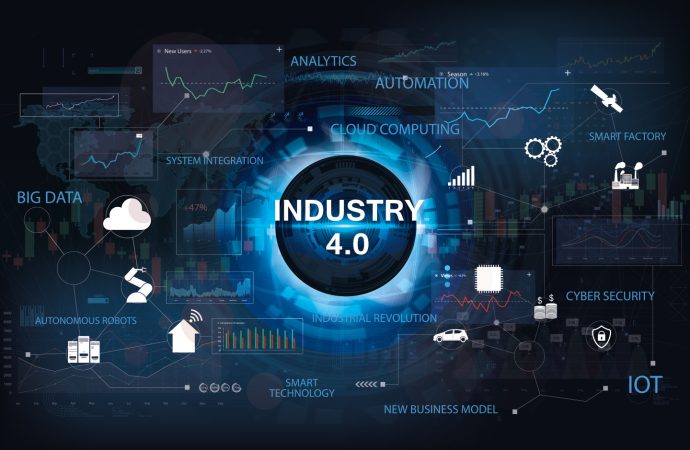Introduction Author Introduction: John Davis, an industrial engineer with over two decades of experience, has witnessed the evolution of manufacturing and industrial processes firsthand. With a Master’s degree in Industrial Engineering and a focus on digital transformation, John has been a leading advocate for implementing digital twin technology in modern industries. 1. Introduction to Digital
Introduction

Image by : Yandex
Author Introduction: John Davis, an industrial engineer with over two decades of experience, has witnessed the evolution of manufacturing and industrial processes firsthand. With a Master’s degree in Industrial Engineering and a focus on digital transformation, John has been a leading advocate for implementing digital twin technology in modern industries.
1. Introduction to Digital Twins and Industry 4.0
The fourth industrial revolution, or Industry 4.0, is marked by the fusion of digital, physical, and biological systems. At the heart of this transformation lies the concept of digital twins—virtual replicas of physical assets, processes, or systems that enable real-time monitoring and simulation. This article explores how digital twins are revolutionizing Industry 4.0, driving innovation and efficiency across various sectors.
2. Understanding Digital Twin Technology
Digital twins integrate real-time data and advanced analytics to create a dynamic virtual model of a physical object or system. This model continuously updates to reflect changes in the physical counterpart, providing valuable insights and predictive capabilities. Examples include digital twins of manufacturing equipment, entire production lines, or even whole buildings.
3. Enhancing Operational Efficiency
One of the primary benefits of digital twins is the significant enhancement in operational efficiency. By providing real-time data and analytics, digital twins allow for precise monitoring and control of industrial processes. This leads to reduced downtime, optimized performance, and increased productivity. For instance, digital twins in the automotive industry help optimize assembly lines, resulting in faster production cycles and lower costs.
4. Predictive Maintenance and Reduced Downtime

Image by : Yandex
Predictive maintenance is a game-changer enabled by digital twin technology. By continuously monitoring the condition of equipment, digital twins can predict potential failures before they occur. This proactive approach reduces unexpected downtime and extends the lifespan of machinery. Companies like General Electric use digital twins for their jet engines, significantly improving reliability and reducing maintenance costs.
5. Innovation and Product Development
Digital twins facilitate rapid prototyping and innovation by allowing engineers to test and refine designs in a virtual environment before physical production. This accelerates the product development cycle and reduces costs associated with physical prototypes. In the aerospace industry, digital twins are used to simulate and optimize aircraft designs, enhancing safety and performance.
6. Improving Supply Chain Management
Supply chain management benefits immensely from digital twin technology. By creating virtual models of supply chains, companies can optimize logistics, predict disruptions, and improve overall efficiency. Digital twins help identify bottlenecks, streamline operations, and enhance coordination among supply chain partners.
7. Smart Cities and Infrastructure
Beyond manufacturing, digital twins are transforming urban planning and infrastructure management. Smart cities use digital twins to model and manage urban environments, enhancing resource allocation, traffic management, and energy efficiency. For example, Singapore’s Virtual Singapore initiative leverages digital twin technology to improve urban planning and sustainability.
8. Challenges and Future Prospects

Image by : Yandex
Despite the numerous benefits, implementing digital twin technology comes with challenges. These include data security, integration complexities, and the need for substantial investment. However, the future prospects are promising, with advancements in AI, IoT, and data analytics driving further innovation in digital twin applications.
Informative Table: Key Applications of Digital Twins
| Application Area | Description | Example Use Cases |
| Operational Efficiency | Real-time monitoring and control of industrial processes | Automotive Assembly Lines |
| Predictive Maintenance | Predicting and preventing equipment failures | Jet Engines |
| Product Development | Virtual prototyping and design optimization | Aircraft Design |
| Supply Chain Management | Optimizing logistics and predicting disruptions | Streamlined Operations |
| Smart Cities | Enhancing urban planning and infrastructure management | Traffic Management, Resource Allocation |
Comparative Table: Traditional Methods vs. Digital Twin Technology
| Feature | Traditional Methods | Digital Twin Technology |
| Operational Monitoring | Manual, Periodic Inspections | Real-time, Continuous Monitoring |
| Maintenance Approach | Reactive, Scheduled Maintenance | Predictive, Condition-Based Maintenance |
| Product Development | Physical Prototyping, Longer Cycles | Virtual Prototyping, Accelerated Cycles |
| Supply Chain Visibility | Limited, Delayed Insights | Comprehensive, Real-time Insights |
| Urban Planning | Static Models, Limited Flexibility | Dynamic Models, High Flexibility |
Conclusion
Digital twins are at the forefront of the Industry 4.0 revolution, offering unprecedented capabilities in monitoring, maintenance, innovation, and efficiency. By creating virtual replicas of physical systems, digital twins enable industries to optimize operations, predict and prevent failures, and accelerate product development. As technology continues to advance, the integration of digital twins will become increasingly vital in driving industrial and urban transformation.
This article, authored by John Davis, leverages his extensive experience in industrial engineering and digital transformation to provide a comprehensive overview of how digital twins are revolutionizing Industry 4.0. Whether you are an industry professional or a technology enthusiast, this detailed analysis offers valuable insights into the transformative power of digital twin technology.
















